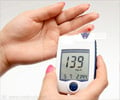- Polycystic Ovary Syndrome: It's Not Just Infertility - (http://www.aafp.org/afp/20000901/1079.html)
- Imaging in Polycystic Ovary Disease - (http://www.emedicine.com/radio/topic565.htm)
- Current Perspectives in Polycystic Ovary Syndrome - (http://www.aafp.org/afp/20030815/697.html)
Polycystic Ovarian Syndrome - Overview
Polycystic ovarian syndrome is the most common hormonal disorder among women of reproductive age and can cause infertility.
Nomenclature:
Polycystic ovary disease
Functional ovarian hyperandrogenism
Hyperandrogenic chronic anovulation
Ovarian dysmetabolic syndrome
Polycystic ovarian syndrome
Stein-Leventhal syndrome
Polycystic ovarian syndrome is the most common hormonal disorder among young women and a leading cause of infertility. Its exact cause is unknown.
"The physician should no longer regard these women as merely having annoying cosmetic complaints, or only suffering from infertility, but as having potential metabolic disorders that may be associated with type 2 diabetes and cardiovascular events," comments Rhoda H. Cobin, MD, FACE, Chair of the PCOS Task Force.
The syndrome was originally reported by Stein and Leventhal in 1935 when they described a group of women with absence of menstrual periods (amenorrhea), infertility, hirsutism (unwanted hair growth in women), and enlarged polycystic ovaries.

In this condition, the ovaries and adrenal glands produce more testosterone and less estrogen and progesterone than normal. This imbalance causes many of the symptoms of the disease.
Follicles of the ovary are the basic unit of female reproductive biology. They are usually round and contain a single egg (also called ovum). Normal ovarian volume in the menstruating females is 5-15 mL, with an approximate mean of 10 mL.
In polycystic ovary disease, the ovaries are enlarged, with a thick, scarred capsule associated with an abnormally high number of follicles in the ovaries. This gives the impression of multiple cysts and hence the term ‘polycystic’. Any ovarian follicle that is larger than two centimeters, is called an ovarian cyst. Cyst is a closed hollow sac that usually contain air, fluids, or semi-solid material.
The follicles in polycystic ovaries may concurrently exist in varying states of growth, maturation, or degeneration.




















